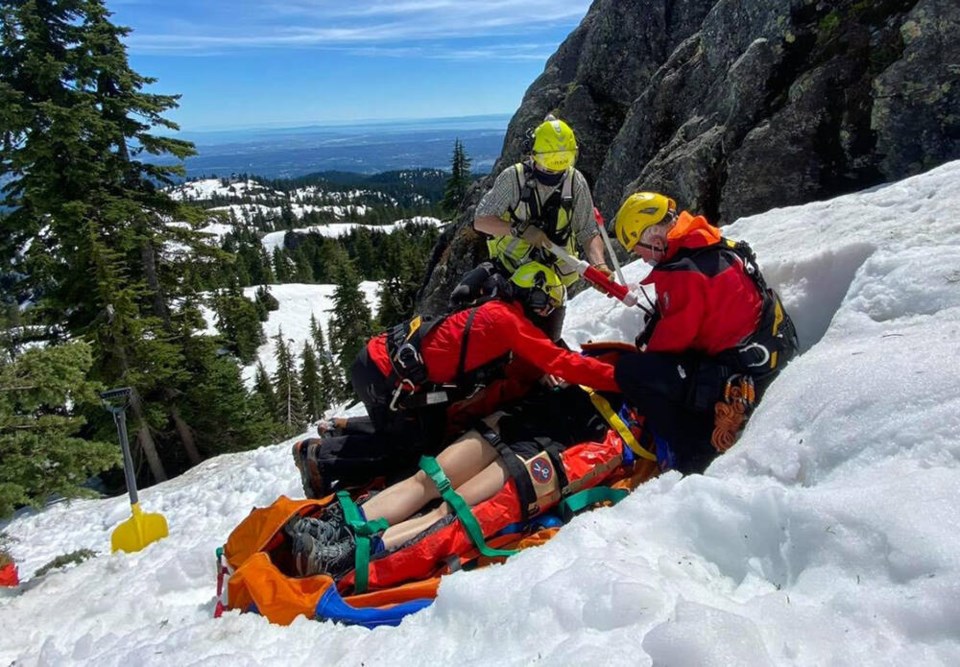As the trees sprout leaves and tulips crop up out of the soil, Vancouverites race to embrace the change in weather.
Vancouver is known for its plethora of outdoor recreation options, and while some don’t mind braving the snow, many residents spend winter counting down the days until they can get back to their favourite outdoor hobbies.
Unfortunately, the hibernation schedules for nearby mountains don’t line up with the rest of ours. Shoulder season, when winter is over in the city but still very much alive in the backcountry, can be a particularly dangerous time if you are not prepared for the conditions, said Mike Danks, North Shore Rescue team leader.
“The shoulder season really catches people off guard, because we can have a beautiful sunny day where it’s warm in the city. And they’ll think they think that’s the same conditions that they’re going to find in the mountains.”
Danks explained how the weather this time of year presents a unique danger.
“The snow is going to be starting to melt out from underneath. So, it’s going to start to kind of hollow out, and when people are walking on that snow, they can potentially break through, injuring themselves.” he said.
Sandra Riches, executive director at BC AdventureSmart, said they receive 1,500 search and rescue calls a year, 73 per cent of which result in a SAR response where a command base is set up and teams are sent into the field.
According to Riches, preparedness is paramount.
“The top three reasons for search and rescue throughout the province which apply to the North Shore are injury, getting lost and disoriented, and exceeding abilities,” she said. “We talk a lot about the three T’s in our messaging: trip planning, training, taking the essentials. People [should] reference the three T’s, think about them and how they can be ready for their adventure prior to hitting the trail. A little bit of planning with their group talking about where they’re going to go, who’s joining them, what gear are they taking.”
Fortunately, simple steps can make adventures this time of year safe and enjoyable.
“It’s always important to have extra layers, right now, gear is so light,” said Danks. “Now you can bring an extra puffy jacket. You can bring a really lightweight Gore-Tex jacket with you and that can make the difference between potentially avoiding hypothermia if something does go wrong.”
Some other essentials this time of year include a light source, fire making kit, signalling device, extra food and water, navigational communication, first aid, emergency shelter, a utility knife and sun protection, said Riches.
The British Columbia Search and Rescue Association is dedicated to increasing awareness to help reduce the number and severity of search and rescue calls. They provide a wide range of outdoor education tutorials which share valuable information, which can be found here.
For those looking for a different view of British Columbia’s backcountry, BC AdventureSmart is always looking for dedicated volunteers to expand their team. For information on upcoming events, visit their website.
Jordan Copp is an intern reporter with the North Shore News. He can be contacted at [email protected].



